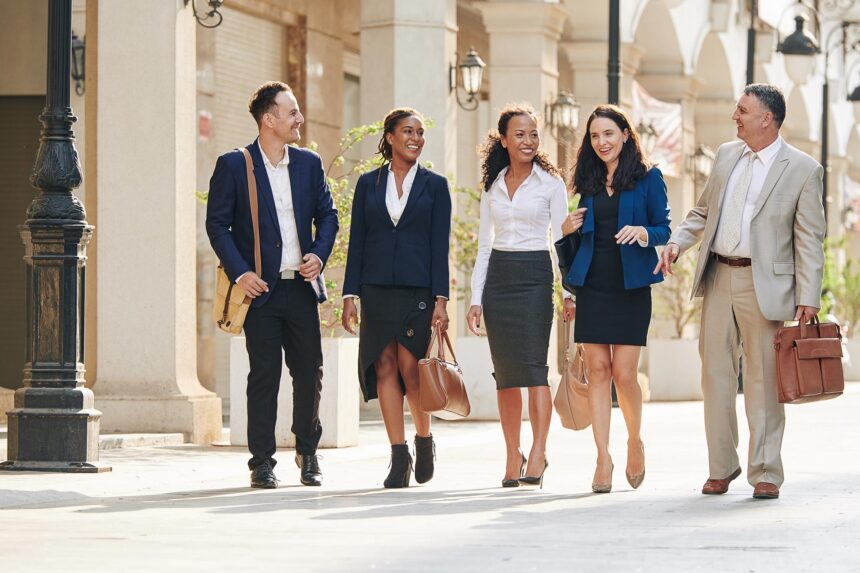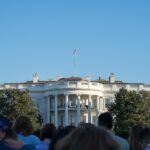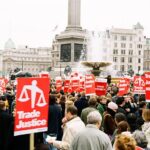A strong City Council looks over Riverdale’s future with anticipation and progress, refusing to give into despair. Communities have become too complex; therefore, leadership needs to become functional, decision-making processes should be open, and policies must be creative. This treatise will explore local governance in general and how the City Council of Riverdale is likely to address actual problems while also setting the foundation for a brighter, sustainable tomorrow.
This isn’t about policies or statistics, but about people: the families that call Riverdale home, small business owners trying to hold it together, and youth activists waging for just green tomorrow. It’s how the City Council can work hand in hand with their citizenry to build a thriving community, not just one limping along.
The Role of Local Governance in Modern Society
Dissecting local governance is out of the question; it defines life as we know it. Truly, when the streetlamp goes out, who do you call? When your child wants an assurance of safe play in a park, who makes sure it gets built? Right! A local government. Local Councils respond much faster and more appropriately to challenges of immediate concern as compared to federal or state bodies.
Why Local Governance Matters
- Proximity to Citizens : Local councils have a direct line of communication with residents, allowing for more personalized solutions. For example, if a neighborhood is struggling with flooding after heavy rains, the City Council can quickly mobilize resources without waiting for higher levels of government to act.
- Accountability : Elected officials at the local level are more accessible, fostering trust and transparency. You’re far more likely to bump into your city council member at the grocery store than a senator at the state capitol.
- Customized Solutions : Policies can be tailored to address the unique needs of specific neighborhoods or districts. What works for downtown Riverdale might not work for the suburbs, and that’s okay—local governance allows for flexibility.
Riverdale’s City Council exemplifies these principles, striving to create a harmonious balance between urban growth and community well-being. But let’s not sugarcoat it: achieving this balance isn’t easy. It requires hard work, collaboration, and a deep understanding of what makes Riverdale tick.
Current Challenges Facing Riverdale’s City Council
While Riverdale has made significant strides in recent years, several challenges remain that demand immediate attention and strategic planning. These aren’t just bureaucratic hurdles—they’re real-life issues affecting real people every single day.
1. Urbanization and Infrastructure Development
As Riverdale continues to grow, managing urban sprawl and upgrading infrastructure has become a top priority. Roads, public transportation systems, and utilities must keep pace with population increases to avoid congestion and inefficiencies. Imagine trying to get to work on time when every traffic light seems stuck on red, or dealing with water outages because the pipes are decades old. These are the kinds of problems that frustrate residents and stifle economic growth.
Strategies for Sustainable Urbanization
- Smart Growth Initiatives : Encouraging compact, walkable neighborhoods to reduce traffic and preserve green spaces. Picture streets lined with trees, sidewalks bustling with pedestrians, and shops within walking distance—this isn’t just a dream; it’s achievable.
- Public-Private Partnerships : Collaborating with private entities to fund large-scale infrastructure projects. Sometimes, the government can’t do it all alone, and that’s okay. By teaming up with businesses, Riverdale can tackle big projects like building new schools or upgrading public transit.
- Zoning Reforms : Updating zoning laws to accommodate mixed-use developments and affordable housing. Zoning might sound boring, but it’s the blueprint for how our city grows. Without thoughtful reforms, we risk creating segregated neighborhoods or overdeveloped areas that lack charm.
2. Environmental Sustainability
With climate change posing a growing threat, Riverdale’s City Council must prioritize environmental sustainability to protect its natural resources and ensure a livable future for generations to come. Remember those scorching summer days last year? Or the freak storm that knocked out power for hours? These aren’t isolated incidents—they’re signs of a changing world.
Key Environmental Initiatives
- Green Spaces Preservation : Expanding parks and conserving wetlands to enhance biodiversity. Parks aren’t just pretty places to jog; they’re lungs for our city, filtering air and providing habitats for wildlife.
- Waste Management Programs : Implementing recycling mandates and reducing landfill dependency. Let’s face it—nobody wants to live next to a mountain of trash. By improving waste management, Riverdale can keep its streets clean and its air fresh.
- Renewable Energy Adoption : Investing in solar panels for municipal buildings and incentivizing residential installations. Imagine a Riverdale where every rooftop gleams with solar panels, powering homes and businesses sustainably.
3. Economic Equity and Social Justice
Economic disparities and social inequities persist in Riverdale, requiring targeted interventions to uplift marginalized communities and promote inclusivity. Walk through certain parts of town, and you’ll see thriving cafes and boutiques. But venture a few blocks away, and you’ll find empty storefronts and crumbling sidewalks. This divide isn’t fair—and it’s not sustainable.
Steps Toward Economic Equity
- Affordable Housing Projects : Partnering with developers to construct low-cost housing units. Everyone deserves a safe, stable place to live, regardless of income.
- Job Training Programs : Equipping residents with skills needed for emerging industries. Whether it’s coding, carpentry, or culinary arts, training programs give people the tools to succeed.
- Small Business Support : Offering grants and tax breaks to local entrepreneurs. Small businesses are the backbone of any community, and supporting them means supporting the entire economy.
4. Public Safety and Community Well-Being
Ensuring the safety and well-being of residents is a cornerstone of effective local governance. Riverdale’s City Council must address rising crime rates and mental health concerns while fostering a sense of community cohesion. No one should feel unsafe in their own neighborhood—or afraid to ask for help when they need it.
Approaches to Enhance Public Safety
- Community Policing : Building trust between law enforcement and residents through collaborative efforts. Cops shouldn’t just patrol streets; they should know the names of the kids playing basketball at the park.
- Mental Health Services : Expanding access to counseling and crisis intervention programs. Mental health is health, plain and simple. By investing in these services, Riverdale can save lives.
- Youth Engagement : Creating recreational opportunities to deter juvenile delinquency. Give teenagers something positive to do—like sports leagues or art classes—and watch how much happier (and safer) the community becomes.
Vision for the Future: Transformative Goals of Riverdale’s City Council
Looking ahead, Riverdale’s City Council aims to implement transformative goals that will redefine the city’s trajectory. These objectives reflect a commitment to innovation, inclusivity, and resilience. But let’s be clear: this isn’t about lofty ideals or empty promises. It’s about tangible actions that improve lives.
1. Smart City Integration
By embracing technology, Riverdale seeks to become a smart city , leveraging data analytics and IoT devices to improve efficiency and citizen services. Think of it as giving the city a brain—a really smart one.
Components of a Smart City
- Traffic Management Systems : Using sensors to optimize traffic flow and reduce congestion. Fewer cars idling means less pollution and shorter commutes.
- Digital Platforms : Launching apps for reporting issues like potholes or broken streetlights. Why wait weeks for someone to notice a problem when you can report it instantly from your phone?
- Energy Monitoring : Installing smart meters to track and reduce energy consumption. Saving electricity doesn’t just lower bills—it saves the planet too.
2. Participatory Governance
Empowering residents to actively participate in decision-making processes ensures that policies reflect the collective will of the community. After all, who knows Riverdale better than the people who live here?
Methods for Encouraging Participation
- Town Hall Meetings : Hosting regular forums for open dialogue between officials and citizens. These aren’t just meetings; they’re conversations where voices matter.
- Online Surveys : Gathering feedback on proposed initiatives via digital platforms. Not everyone can attend a meeting, but everyone can click a button.
- Citizen Advisory Boards : Forming committees to provide input on specific issues. Want to shape education policy? Join the board!
3. Climate Resilience Planning
Given the increasing frequency of extreme weather events, Riverdale’s City Council is developing comprehensive plans to enhance climate resilience. Because no one wants to relive the chaos of last year’s flash floods.
Elements of Climate Resilience
- Flood Mitigation : Constructing barriers and improving drainage systems. Prevention is always better than cleanup.
- Heatwave Preparedness : Establishing cooling centers during heatwaves. A little shade and AC can go a long way in saving lives.
- Disaster Response Teams : Training volunteers to assist during emergencies. Neighbors helping neighbors—that’s what resilience looks like.
4. Cultural and Educational Enrichment
Promoting arts, culture, and education enriches the fabric of society, making Riverdale a vibrant place to live, work, and visit. Culture isn’t just entertainment; it’s identity.
Initiatives for Cultural Growth
- Public Art Installations : Commissioning murals and sculptures to beautify public spaces. Art transforms ordinary walls into storytelling canvases.
- Library Expansion : Upgrading facilities to include modern amenities and digital resources. Libraries are more than books—they’re gateways to knowledge.
- Cultural Festivals : Celebrating diversity through annual events showcasing various traditions. Food, music, dance—it’s a party with purpose.
Case Studies: Lessons from Other Cities
To inform its strategies, Riverdale’s City Council can draw inspiration from successful initiatives implemented elsewhere. Learning from others doesn’t mean copying—it means adapting proven ideas to fit our unique context.
Copenhagen: A Model for Green Urbanism
Copenhagen’s focus on cycling infrastructure and carbon neutrality offers valuable insights for Riverdale’s sustainability agenda. Bikes over cars? Yes, please.
Singapore: Excellence in Smart City Development
Singapore’s use of technology to streamline public services demonstrates the potential of smart city integration. From automated trash collection to predictive policing, tech can truly transform cities.
Portland: Championing Participatory Governance
Portland’s robust system of neighborhood associations highlights the importance of engaging citizens in governance. Empowered communities build stronger cities.
The Importance of Leadership in Local Governance
Effective leadership is critical to realizing the vision of a thriving, equitable, and sustainable Riverdale. City council members must exhibit qualities such as integrity, empathy, and forward-thinking to inspire confidence and drive change. Leaders aren’t born—they’re made, through hard work and dedication.
Qualities of Strong Leaders
- Visionary Thinking : Ability to anticipate future trends and plan accordingly. Great leaders don’t just react; they prepare.
- Collaboration Skills : Willingness to work with diverse stakeholders to achieve common goals. Teamwork makes the dream work.
- Adaptability : Capacity to pivot strategies in response to unforeseen challenges. Flexibility is key in a rapidly changing world.
Conclusion: Building a Brighter Tomorrow for Riverdale
The future of Riverdale’s City Council hinges on its ability to navigate current challenges while embracing innovative solutions. By prioritizing sustainability , fostering community engagement , and leveraging technology , the council can chart a course toward prosperity and resilience. Together, we can build a city that not only meets the needs of today but also lays a solid foundation for tomorrow.
“Local governance is the art of turning challenges into opportunities. With dedication and collaboration, Riverdale’s City Council can lead the way toward a brighter, more inclusive future.”
Frequently Asked Questions (FAQs)
-
What is local governance?
Local governance refers to the administration and management of municipal affairs by elected officials and government bodies. -
How does Riverdale’s City Council address urbanization?
Through smart growth initiatives, zoning reforms, and public-private partnerships. -
What environmental initiatives is Riverdale pursuing?
Riverdale focuses on preserving green spaces, improving waste management, and adopting renewable energy. -
How does participatory governance benefit residents?
It ensures policies align with community needs and fosters trust between citizens and officials. -
What is a smart city, and why is it important?
A smart city uses technology to enhance efficiency and improve quality of life for residents. -
How is Riverdale addressing economic equity?
Through affordable housing projects, job training programs, and support for small businesses. -
What steps is Riverdale taking to improve public safety?
Initiatives include community policing, expanded mental health services, and youth engagement programs. -
How does cultural enrichment contribute to local governance?
It strengthens community bonds and enhances the city’s appeal as a vibrant place to live. -
What lessons can Riverdale learn from other cities?
Examples include Copenhagen’s green urbanism, Singapore’s smart city model, and Portland’s participatory governance. -
Why is strong leadership essential for local governance?
Strong leaders inspire confidence, foster collaboration, and drive meaningful change.










